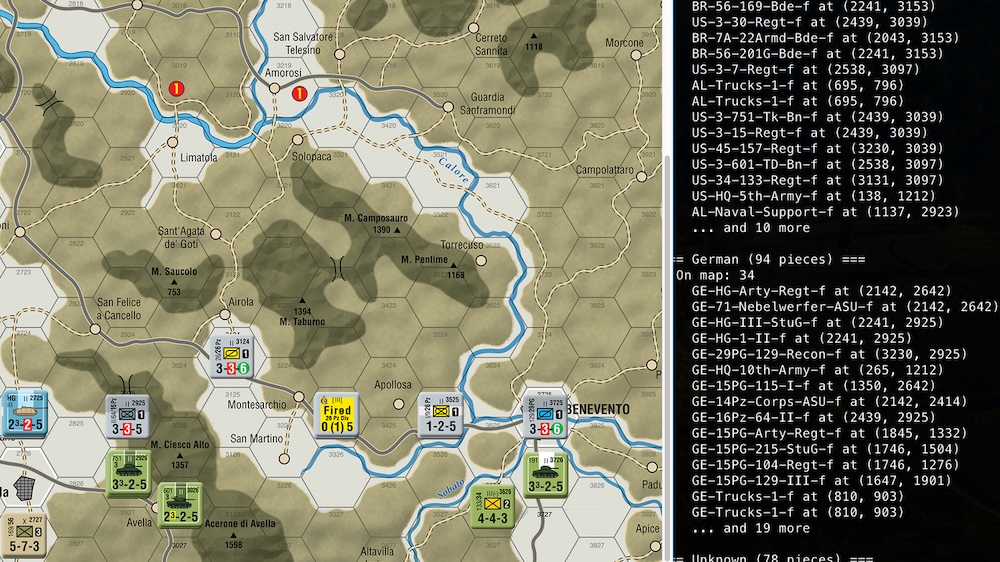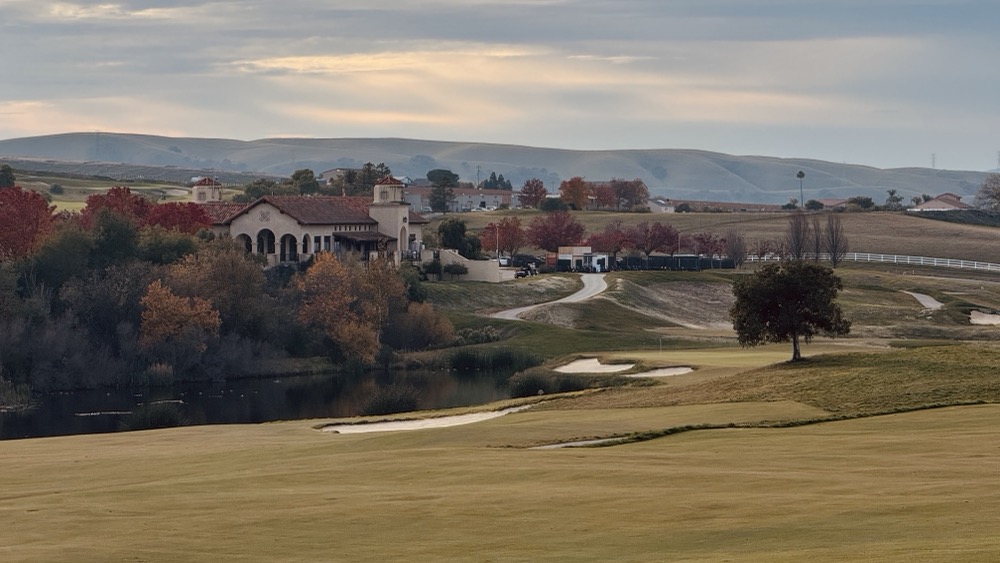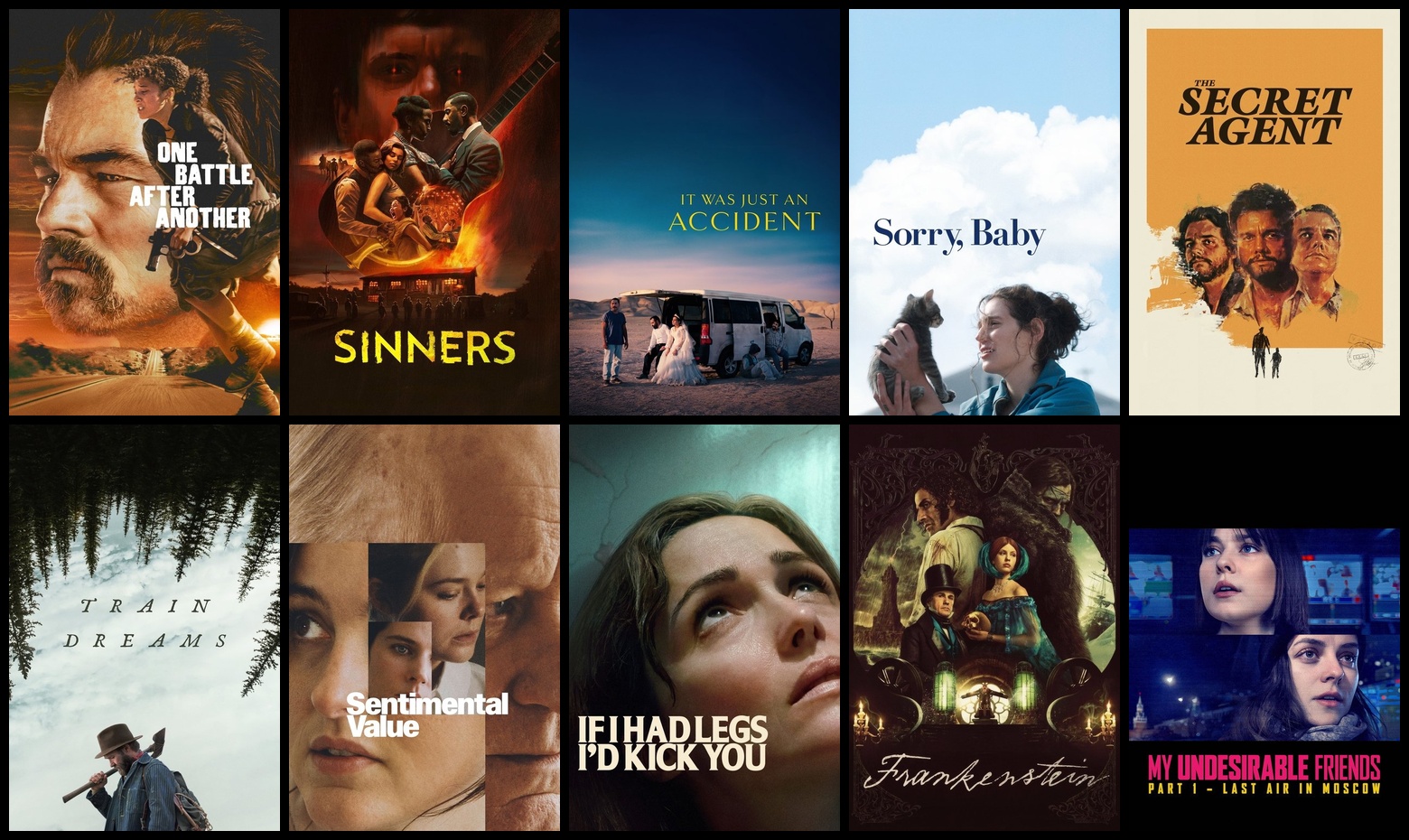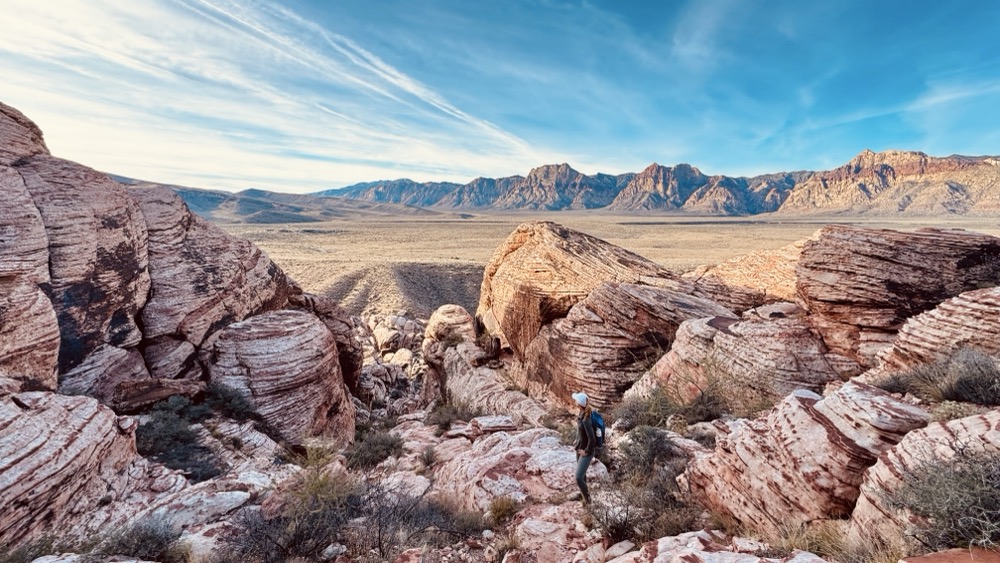Self-Drive in Botswana Part 1: the Dry Part
We are well into our self-drive part of the Africa trip, so here’s an update on the first portion.
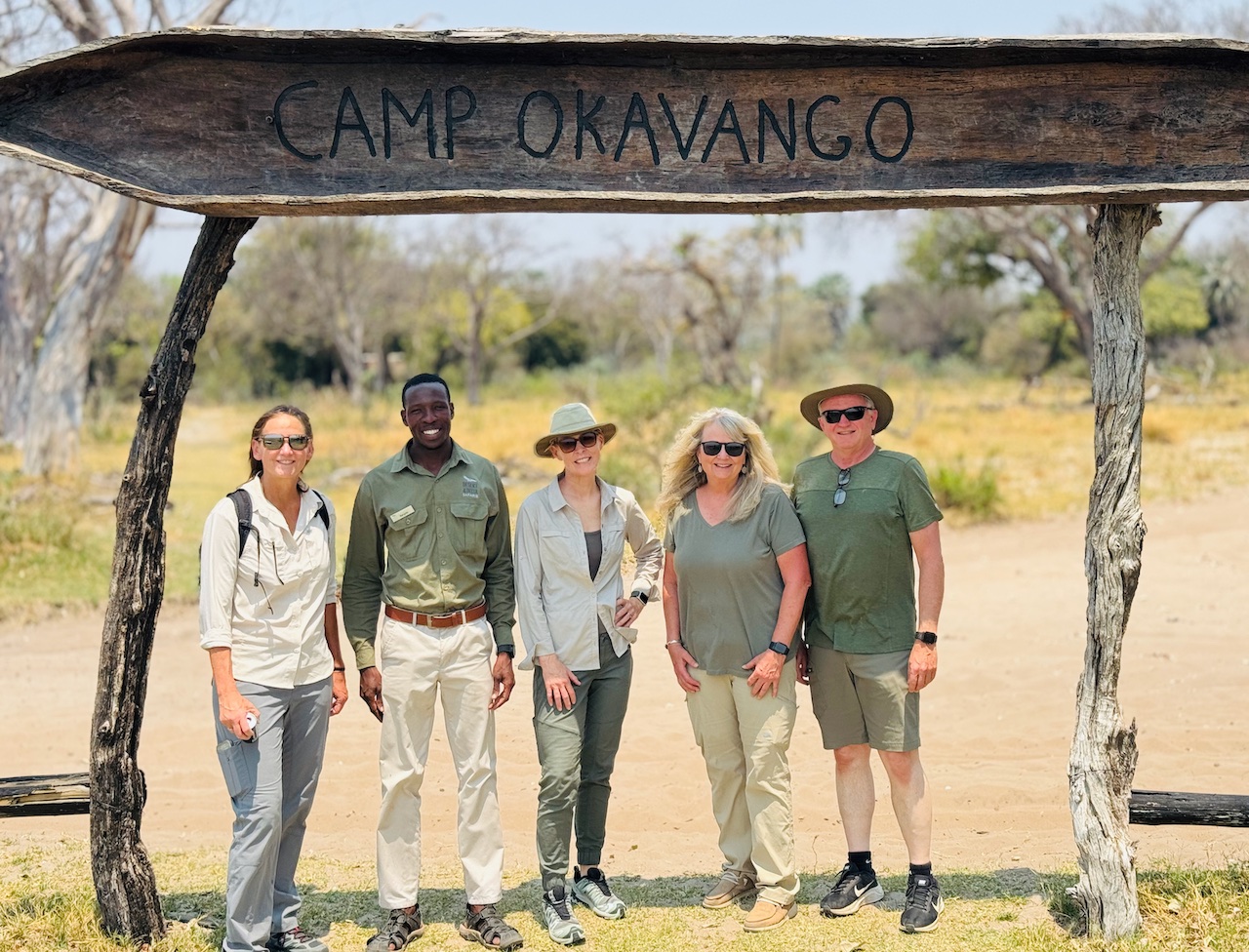 Departing Camp Okavango
Departing Camp Okavango
We flew from Camp Okavango back to Maun airport in a charter multi-seat Cessna, with about 5 other passengers. The flight was beautiful but did not compare to the helicopter ride we took on the outbound side. Plus this flight was covering more territory and we quickly left the wet part of the Okavango Delta. So the land was dry, and covered a lot of ground we’ve driven through previously.
Our arrival in Maun was bittersweet: we had to say goodbye to Tenya, but at the same time welcome her daughter Kelin. It happened too fast at the airport as Tenya had a flight to catch, and Kelin arrived almost concurrently with our arrival. So we did the big switcheroo, and then our new hosts Bushlore greeted us and ushered us off to ATMs and then their Maun location. Time to pick up our 4x4 rigs!
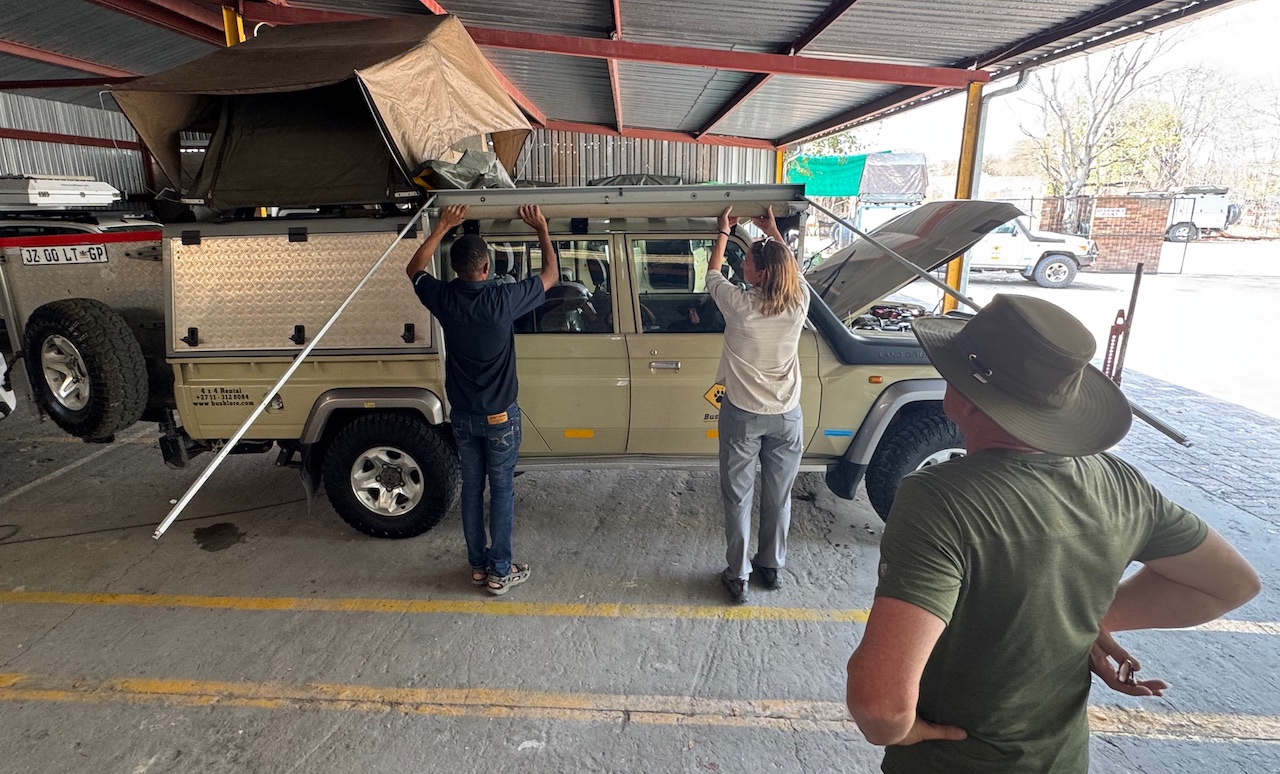 Learning our rigs at Bushlore
Learning our rigs at Bushlore
The pickup at Bushlore was challenging and tiring. It took three hours total, and some mistakes were made. With us going out for over two weeks, we had a lot to cover on operations. We discussed setting up the rooftop tents, the awning, operating gas cooktops, our fresh (but not drinking) water holding tanks, recovery gear, winch operation, airing the tires up and down, and the various 4x4 options to help us navigate the challenging terrain ahead.
We focused our orientation on Ken and Kelin’s rig (single tent on top), knowing that our vehicle (two tents on top) was mostly identical. This is true in terms of configuration, but not necessarily the reality of how everything was kitted out. Karen wisely inspected the tires and noticed that our right rear tire was nearly worn down; they replaced it right away with a newish tread tire. After three hours of orientation, and knowing we were in the middle of the Botswana Independence Day weekend holiday, we were anxious to get checked out and get to dinner and our first campsite before it got too dark.
So, we didn’t put in the time we should have to inspect all of the gear in the second rig. What we’ve learned so far: the air compressor is missing the hose, we were never given our spare cooktops for the gas canisters (no biggie), and our winch is entirely fouled up (biggie).
As it turns out, Ken and Kelin’s rig wasn’t in ideal condition either, but more on that later.
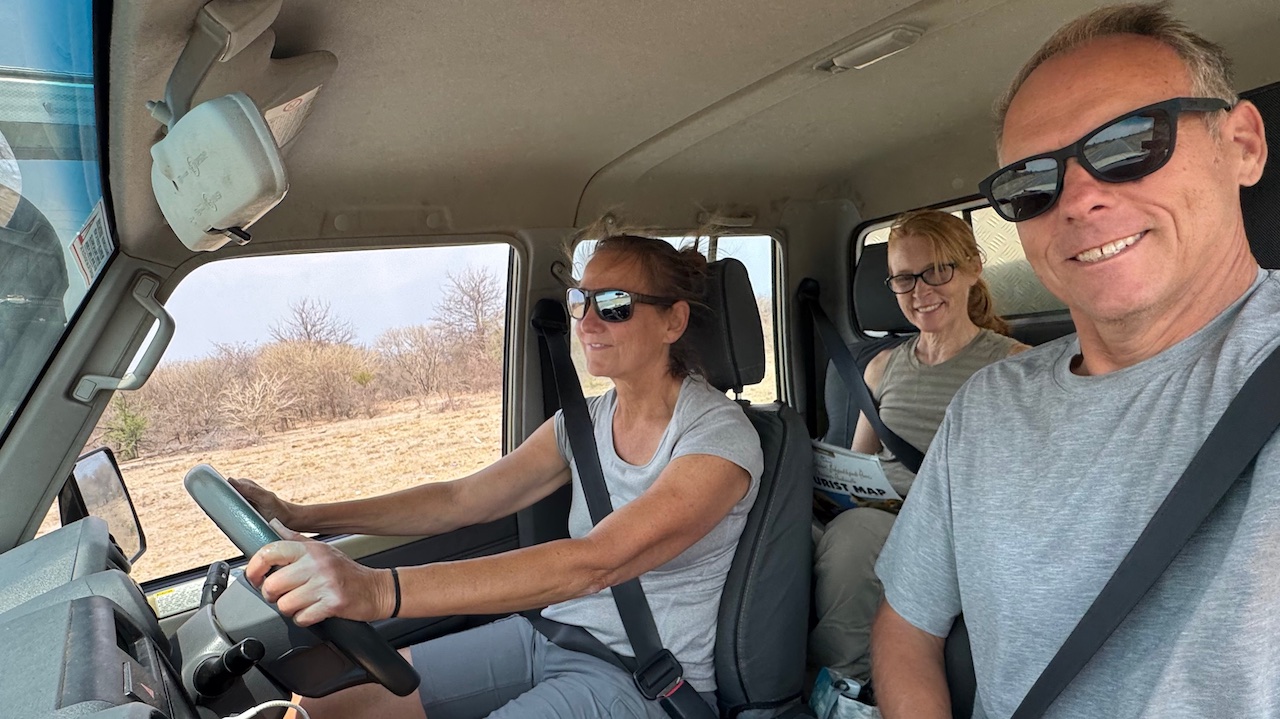 Driving the Land Cruiser
Driving the Land Cruiser
Driving these Land Cruisers is fun! They are amazing vehicles, and I can see why they are loved for this sort of activity. We are in bizarro opposite world here, so we are shifting with our left hands and driving on the left side of the road. We usually get it right.
Karen says “2nd gear is your workhorse!” (she has a Toyota truck) and that is the truth. We can grind through most anything, even at very low speed, and keep it steady in second. I say “most anything” as we’ve encountered some seriously deep sand that not only requires 1st gear but also 4-low.
Ken thoughtfully booked our first night at a higher end private camp right near Maun (Audi Camp). This helped us shake things out and learn the ropes. This was a Sunday night with Monday being the holiday, so it was a par-tee all night long, plus hot and humid and with bugs. Not a great first night camping. The next morning we stocked up on some groceries at Spar (we had done a quick shopping trip at Choppies the night before), had the Bushlore folks look into Ken and Kelin’s air conditioning, then started our drive out.
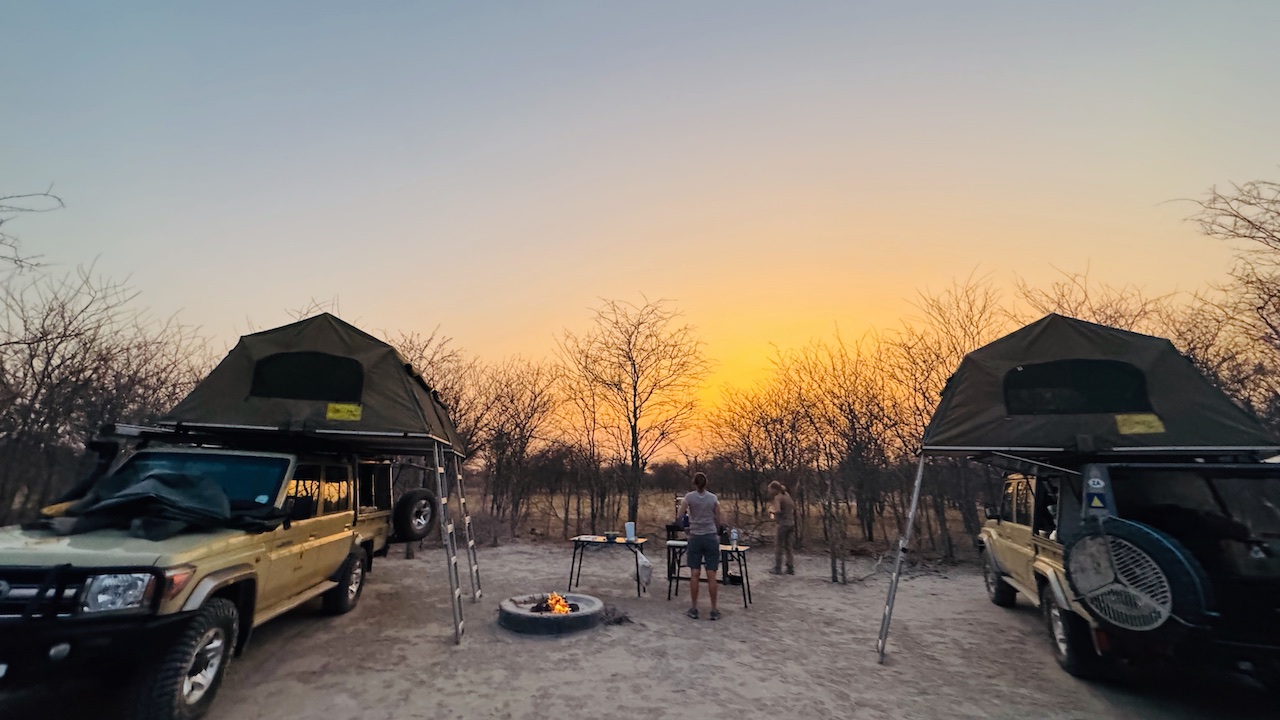 Our camp at Nxai Pans
Our camp at Nxai Pans
Thankfully after driving east to Nxai Pan and moving into a remote camping operation, things got much better. A bit cooler at night, much quieter, and only the noise of hyenas crying in the night to disturb us.
I should note that this is wild camping. Elephants might come through your camground. Hyenas will roam nearby. You don’t leave your tent after dark to pee. You keep a fire going to let the animals know that they should stay away.
Also, you don’t get to these parks with a normal vehicle. As soon as you depart the “tar road” (paved highway), you are immediately in sandy, washboard, rutted road with no chance of getting through without a solid 4x4.
We saw some wildlife along the way from Maun to Nxai Pan: lots of ostrich along the highway, some impala, and as we drove into the park we started to see the other usual suspects like elephants and zebra.
After a long drive in to camp, we were eager to do our first self-led game drive. Right away in Nxai Pan we started a clock-wise loop around the road the goes by the watering hole. Much of the activity was bird watching (so many Kori bustards) but we also saw elephants, ostrich, black-backed jackal, and our first springbok.
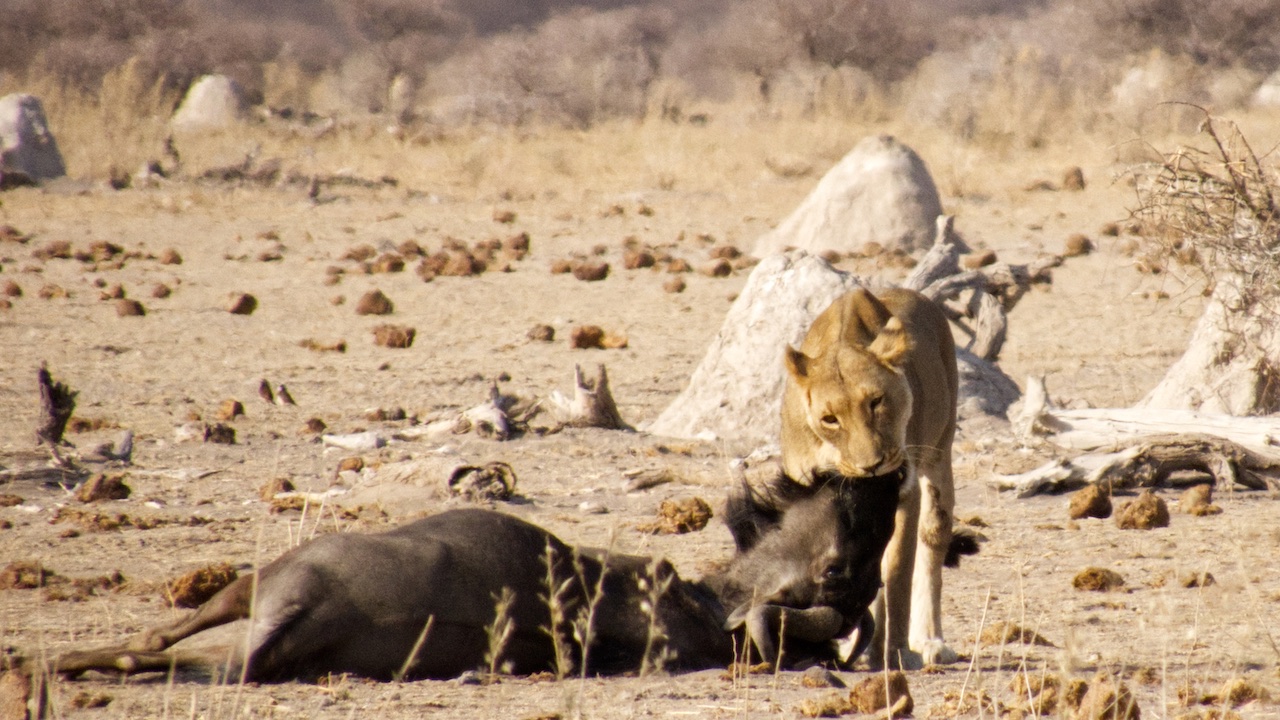 Lioness with wildebeest kill
Lioness with wildebeest kill
The next morning we did a similar drive, but this time in the counter-clockwise direction to hit the watering hole (a very small one – this is dry country) early to see the dawn action. Not much going on there, but on return we found a lioness in the process of killing a wildebeest by suffocation. I wish we had seen the takedown, but this was still very cool to see.
After leaving Nxai Pan we ventured further east to the remote town of Nata. Our lodge there where we camped was luxurious, and we were thankful for two nights there. Still camping, but with a nice restaurant and swimming pool to upgrade the situation a bit.
Our first afternoon there we did a drive out to see some historical baobob trees. This was a long off-road journey, with the first stop being Greens baobob. We found it, did not find the proper inscription (though lots of other signatures), and ventured on to the known-to-be collapsed Chapmans baobob. We expected to see a dead tree but we found… no tree. Gone, decimated. Still worth the drive!
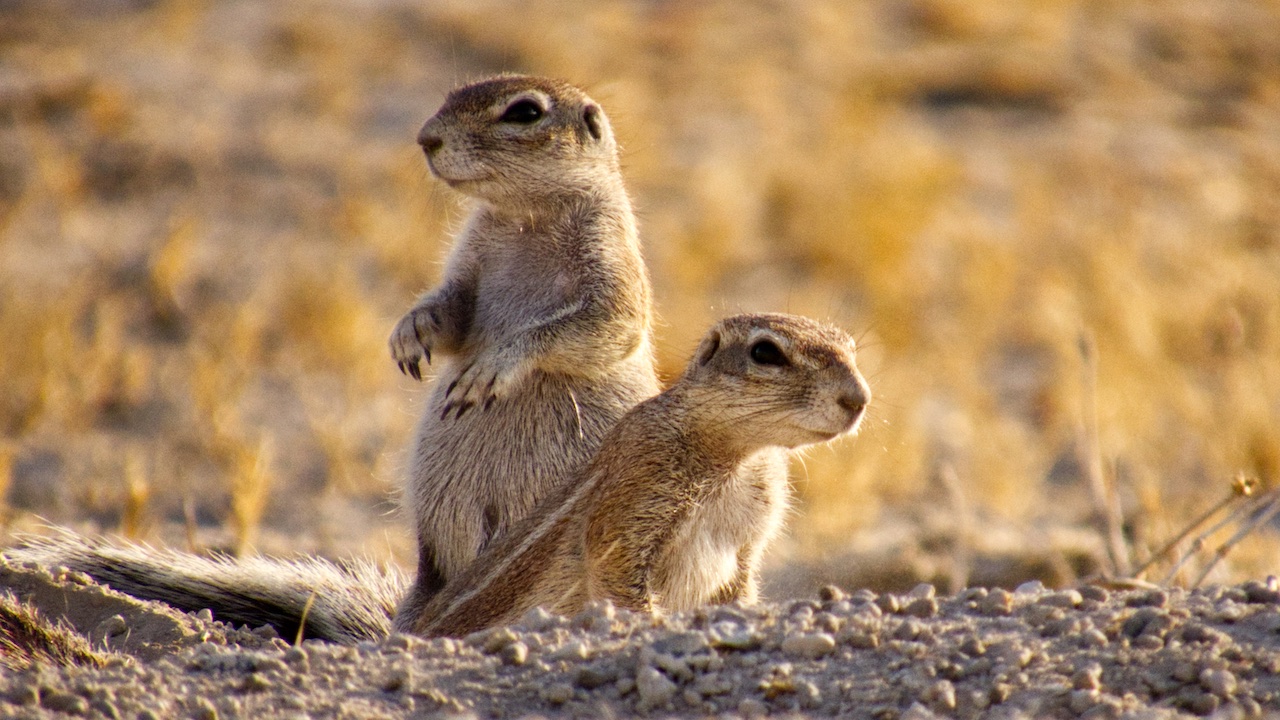 Two ground squirrels standing up and looking around
Two ground squirrels standing up and looking around
We saw some elephants and antelope along the drive, but on the way back I spotted these little critters. My call on the radio was “mongoose! No, meerkats! Wait, mongoose! Meerkats!”. They were neither, but still super cute. Thank you ground squirrels.
 Meerkats
Meerkats
The next day we did a game drive via the Nata Lodge and got a true meerkat experience. It is worth going with a guide to find them: they have a naturalist in the field that is helping to normalize a few colonies to welcome human interaction, and it was so much fun. One of them even climbed up on Kelin.
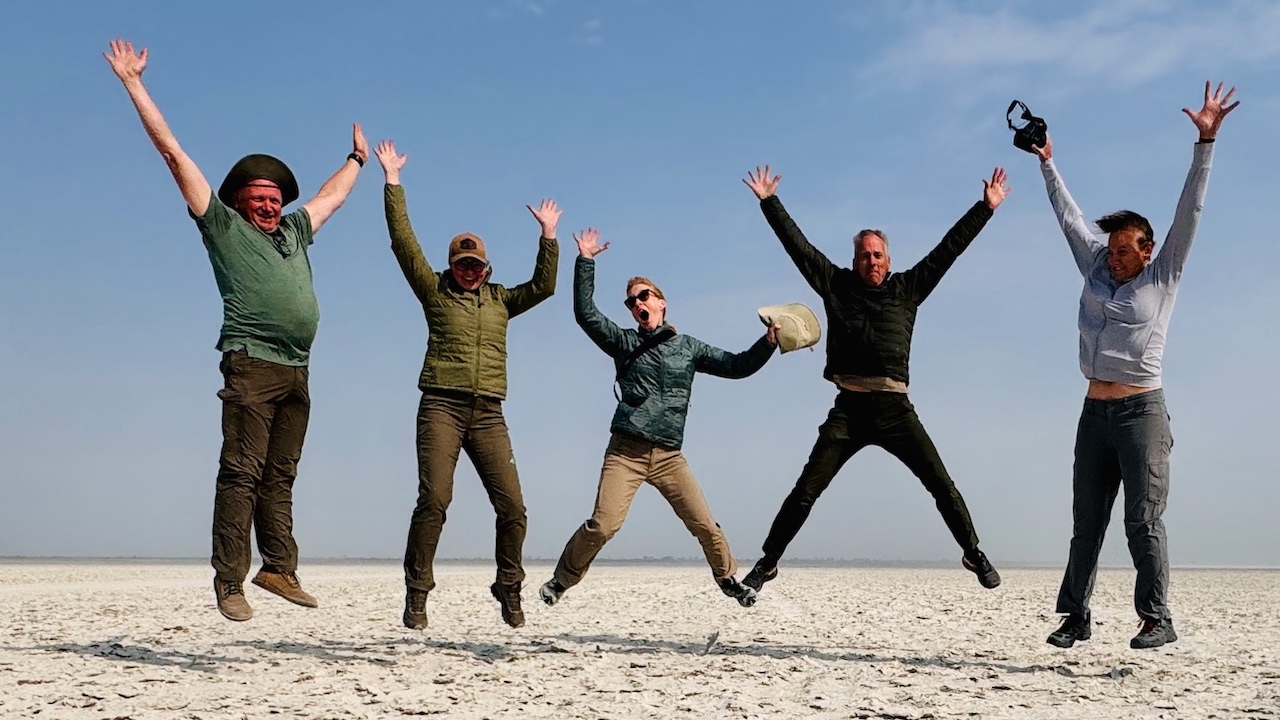 Jumping in the pan
Jumping in the pan
We also visited the Makgadikgadi salt pans, which hopefully will be full of water and teeming with shrimp and catfish within about 5-6 months. For now it is dry, and it was a great adventure to drive out.
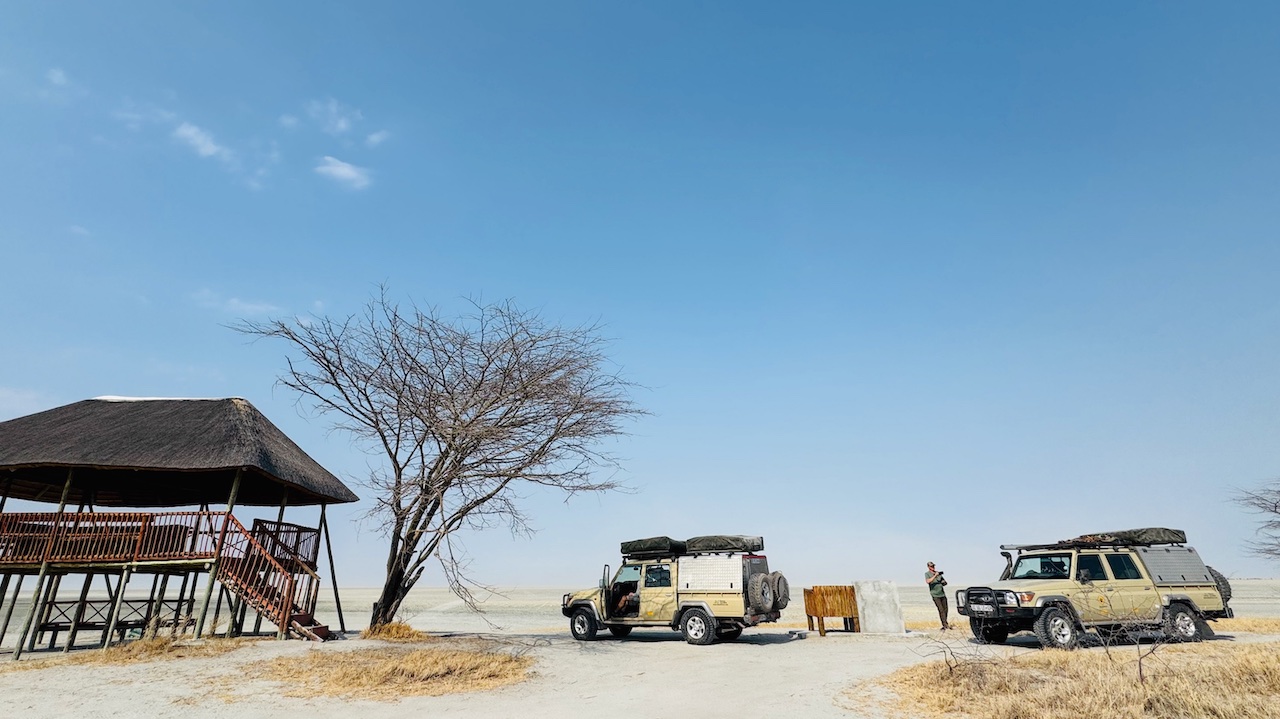 Parking at Nata bird sanctuary
Parking at Nata bird sanctuary
Our next self drive in this area was to the Nata bird sanctuary. The woman managing the entry essentially tried to turn me away (this is dry season after all): you won’t see anything. It is dry.
We know that! We’d love to see it in May when the flamingos and pelicans are there in droves, and the zebras are there in the thousands to enjoy the salty grass. But there must be something, right?
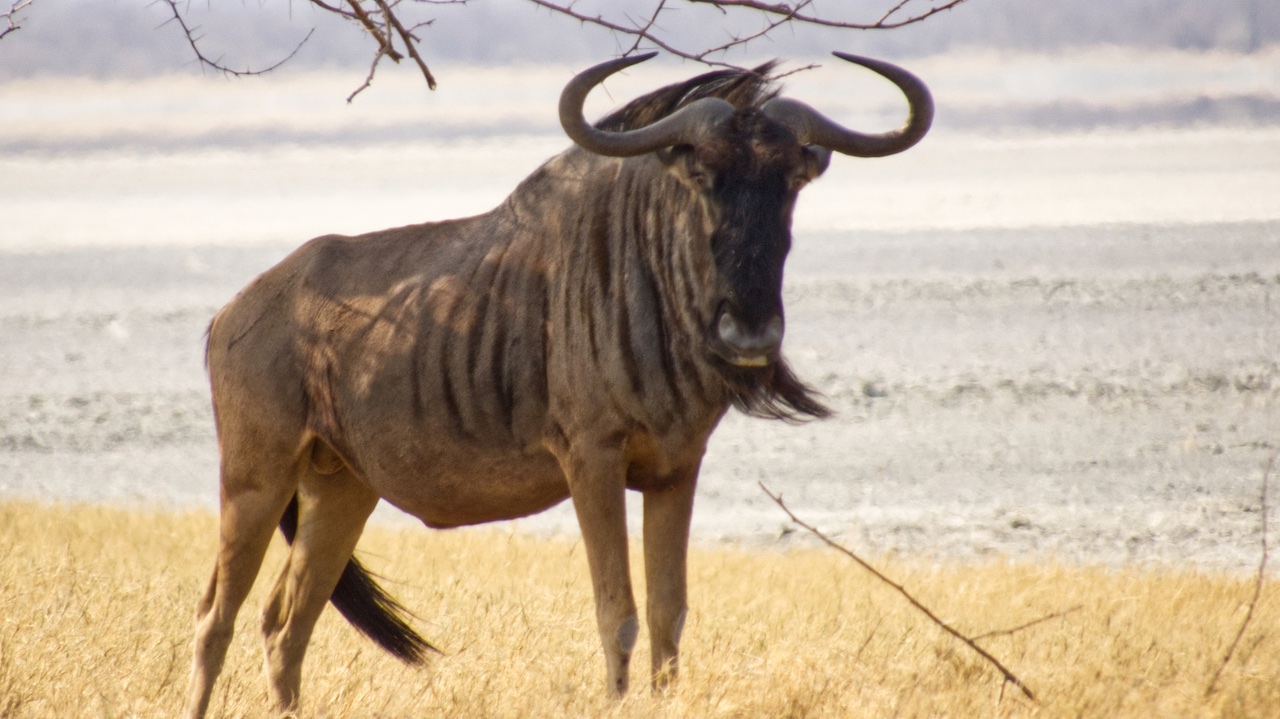 Wildebeest at Nata bird sanctuary
Wildebeest at Nata bird sanctuary
There was plenty! Very few birds: some bustards, some korhaans (also bustards), and many beautiful wildebeest. There’s a dry river bed leading to the pan, and a small patch of standing water, but Ken noticed that the wildebeest wouldn’t drink from it. Instead they would dig into the mud away from pool and drink the wet sand, roll around in it. Not sure why but maybe they knew the water was contaminated in some way?
From Nata we moved up north to the intersection of Botswana, Zimbabwe, Zambia, and Namibia for the opposite experience: a healthy running river and not a small number of elephants. More on that later.





